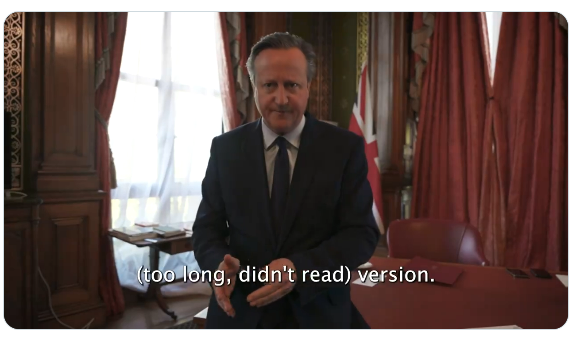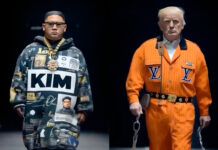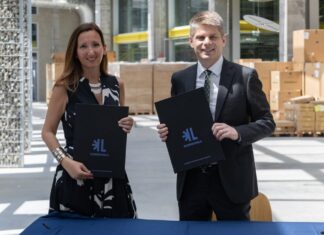Every few years, a new word seems to dominate societal discourses. In recent years the dominant word was “narrative”. New pundits depicted politics as a clash of narratives, diplomacy was understood as the practice of constructing appealing narratives, fake news and conspiracy theories were viewed as disruptive narratives that undermine trust in national institutions while social media posts and LinkedIn profiles were regarded as a form of self-narration or the creation of appealing narratives about oneself. Historic narratives were soon used by nations to construct and strengthen a collective sense of identity. Historic narratives helped reasserted the dominance of the nation state in a globalized world.
Yet the dominance of “narrative” has been supported by the word “context”. Of course this is not a new word. Politicians have long since justified gaffs and unpopular remarks by arguing that these were “taken out of context”. What is new is the diversity of actors that claim to offer context. A BBC newscaster now conducts an interview with an expert to “offer context” on a certain issue. Foreign correspondents are asked to give audiences “a broader context” through which global events may be understood. News articles also offer context, as is the case with a recent New York Times article describing the Cold-War context of the new television show “The Sympathizer”. Activists and NGOs use history and intellectual musings to offer a “context” for their activities while television shows dealing minorities are lauded for offering viewers the nuance and “context” necessary to understand social ills.
The growing popularity of the term “context” may be a response to the de-contextualization that defines the digital society. The digital society is one marked by “context collapse” given the function of digital technologies. Social media algorithms, for instance, filter information offering users snippets of information. Posts from war zones, demonstrations, diplomatic summits and even graduation ceremonies are but short bursts of information devoid of any context. Twitter’s traditional character limit also created an eco-system devoid of context as users had to condense complex issues into 280 characters. As a result, digital users received fractured atoms of reality which could not be grouped into a greater whole or be contextualized. Visuals and images that circle the globe offer the same atomization of reality and “context collapse” as these visuals capture but a millisecond of an event that lasted hours, days or months. What is always missing is the “larger picture” or the context in which an event took place.
Susan Sontag famously argued that pictures are devoid of context and are mere atoms of reality. The context of a picture is determined by multiple individuals. Newspaper editors contextualize pictures by placing them near certain headlines, gallery owners and curators conceptualize pictures by placing them next to other pictures while educators contextualize pictures by placing them in history books and using them as symbolizers of important events. Sontag did not live to witness the emergence of a digital society that operates based on atoms of information. “Context collapse” is the result of the affordances of digital technologies (Twitter character limits), technological design (Facebook filtering algorithms) as well as a short attention span which views a 1000-word news article as an “essay” or chore.
The phenomenon of constant de-contextualization, or “context collapse”, can help explain how a recording of Osama Bin Laden went viral among American TikTok users. Because devoid of historic context, devoid of nuance and detail, and when edited into short bursts of viral information, certain railings of Bin Laden against America might resonate with contemporary critics of US policies in the Middle East.
Notably, diplomacy too has experienced “context collapse”. Indeed, the more complex the world becomes, the more complex crises become, the more diplomats share short fragments of information that are devoid of context and complexity. As one academic recently noted “the complexity of context is constantly overshadowed by robust but overly simplified storytelling”.
In digital diplomacy, entire foreign policies are cramped into a single tweet, geo-political rivalries are illuminated through a one paragraph post while a still image on Instagram offers insight into escalating tensions between two nations. Last week the collapse of context in diplomacy was made apparent when the British Foreign Minister shared a 30 second video analyzing the state of the world and the UK’s foreign policy. The video was labeled the” Too Long Didn’t Read” version of a much longer speech given by the Foreign Minister. It is this video that demonstrates how digital diplomacy has morphed into “de-plomacy” or diplomacy devoid of context. The video’s message is clear- it’s a dangerous world and in a dangerous world the UK must stand up for its beliefs and “take action”.
But the video dares not to delve into these issues, to explain why the world is dangerous, to unpack the different actors and events driving insecurity or to offer a comprehensive analysis of how British foreign policy can mitigate risk while reducing global tensions. The context, the whole picture, is obscured by a desperate attempt by diplomats to tailor digital content to the needs and desires of digital users. Viral de-contextualized videos are the hallmark of today’s digital diplomacy. The same is true of threads on Twitter in which MFAs use three or four tweets to “make sense” or current crises be it the Russia-Ukraine War, the War in Yemen, or the threat of a Chinese invasion of Taiwan.
A world marked by complexity is a world in desperate need of context. Explaining contemporary crises requires far more than three or four tweets because these crises are marked by the involvement of numerous actors with conflicting interests. The Russia-Ukraine War is shaped by the interests of Russia and Ukraine as well as those of the US, the EU, and Great Britain while it has a direct impact on the interests of other actors such as Iran, India and China. This War is emblematic of shifting global power dynamics, it symbolizes a new and anarchic stage in world affairs, it is prolonged by the paralysis of multilateral institutions and by the emergence of populist politics.
Diplomats have mastered the use of social media and have even become proficient in the language of social media. They speak Twitter and Instagram fluently. Yet the challenge that currently faces diplomats is not how to obtain virality but how to offer context and meaning. Digital diplomacy should be used to re-contextualize events and actors, to offer the larger picture, to offer nuance and detail. For a world without context, a world marked by “de-plomacy” is a world that cannot be fathomed by its inhabitants and a world marked by fear and uncertainty. It is a world in which diplomats will find it increasingly hard to function.













